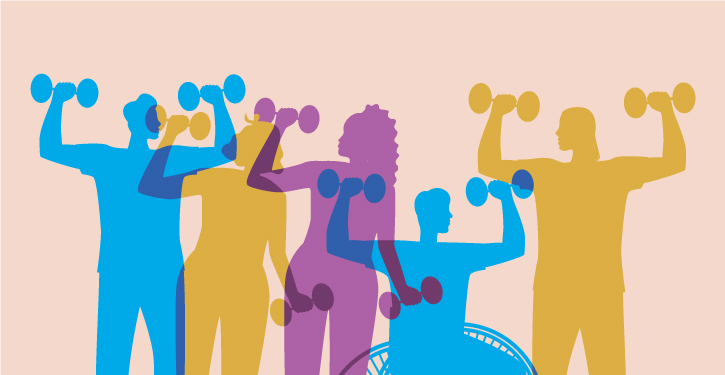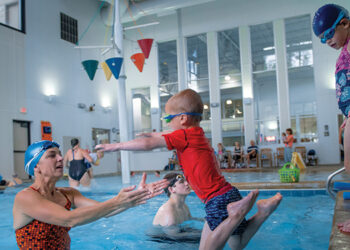Marley Cunningham of Aqua Creek Products shares how recreation centers can create pathways to inclusivity.
In today’s modern world of active lifestyles, recreation facilities find themselves at the heart of diverse communities catering to individuals of varying sizes, abilities and purposes, from fitness enthusiasts to those seeking rehabilitation. They then become more than just places for physical activity, but also vibrant hubs for community well-being.
Recreation facilities are microcosms of the diverse societies they serve. They witness a multitude of users, each with unique needs and aspirations. Among this population, a significant portion includes individuals who face specific challenges due to disabilities or the effects of aging. To genuinely meet the needs of their communities, recreation facilities must be fully inclusive, creating an environment where every individual can participate and thrive.
Embracing inclusivity is not merely a gesture of goodwill, it’s a moral obligation and a societal necessity. All too often, those with disabilities or older adults face barriers when attempting to engage in physical activities. The failure to address these barriers results in exclusion, limiting access to essential services and social connections.
The path to inclusivity begins with self-assessment. Recreation facilities should commit to conducting regular audits of their spaces, equipment and operations.
1. Accessibility
First, ensure physical accessibility. Facilities should have ramps, elevators and designated parking spaces for individuals with mobility challenges. Clear and inclusive signage — including Braille for those with visual impairments — is essential.
2. Equipment
A thorough audit of exercise equipment is necessary. Facilities must determine whether their equipment caters to the diverse needs of their users. This may involve investing in adaptive fitness equipment — such as handcycles or wheelchair-accessible machines — to accommodate individuals with mobility limitations. Additionally, providing low-impact exercise options is crucial for aging adults and individuals in rehabilitation.
3. Staff Training
Proper staff training is paramount. Employees should be well-versed in assisting and accommodating individuals with disabilities. This includes knowledge of adaptive exercise techniques and the ability to help users with equipment adjustments.
4. Program Offerings
Diversifying program offerings is another crucial step toward inclusivity. Consider introducing group classes suitable for various fitness levels and needs. Specialized classes, like adapted yoga or aquatic therapy, can cater to a broader range of abilities.
The benefits of adopting an inclusive approach are manifold. It fosters a sense of belonging and community among all facility users and broadens the facility’s appeal, attracting a more diverse demographic of members and clients. Beyond the tangible benefits, promoting inclusivity allows recreation facilities to become centers of education and advocacy, raising awareness and understanding of diverse needs and abilities within the community.
Conducting regular audits of spaces and equipment is a pivotal strategy toward achieving this goal. It’s not just about physical access. It’s about fostering a sense of inclusivity, promoting well-being and creating a more equitable society for all. Help ensure community facilities stand as beacons of inclusivity, providing vibrant and welcoming spaces for every individual within our diverse communities.










